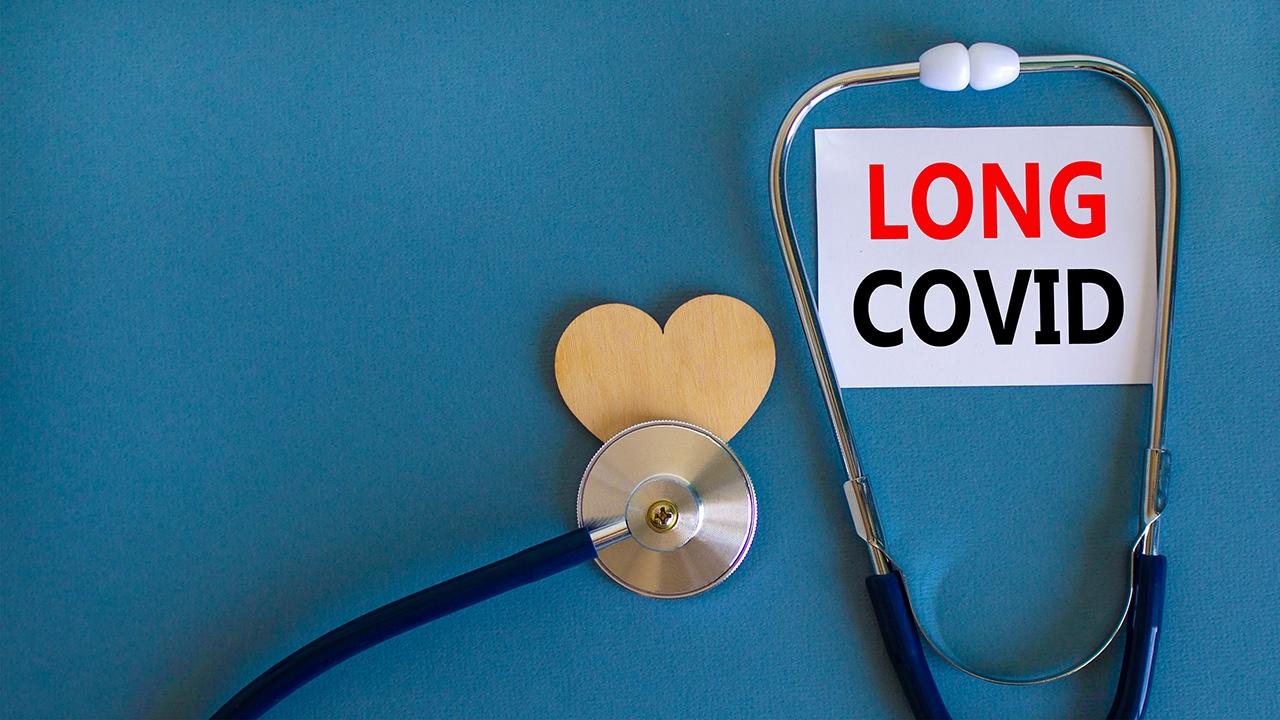Editor's note: Find the latest COVID-19 news and guidance in Medscape's Coronavirus Resource Center.
Pamela Montano, MD, recalls the recent case of a patient with bipolar II disorder who was improving after treatment with medication and therapy when her life was upended by the COVID-19 pandemic.
The patient, who is Puerto Rican, lost two cousins to the virus, two of her brothers fell ill, and her sister became sick with coronavirus, said Dr. Montano, director of the Latino Bicultural Clinic at Gouverneur Health in New York. The patient was then left to care for her sister's toddlers along with the patient's own children, one of whom has special needs.
"After this happened, it increased her anxiety," Dr. Montano said in an interview. "She's not sleeping, and she started having panic attacks. My main concern was how to help her cope."
Across the country, clinicians who treat mental illness and behavioral disorders in Latino patients are facing similar experiences and challenges associated with COVID-19 and the ensuing pandemic response. Current data suggest a disproportionate burden of illness and death from the novel coronavirus among racial and ethnic groups, particularly black and Hispanic patients.

"The COVID pandemic has highlighted the structural inequities that affect the Latino population [both] immigrant and nonimmigrant," said Dr Pamela Montano. //Courtesy Dr Pamela Montano
The disparities are likely attributable to economic and social conditions more common among such populations, compared with non-Hispanic whites, in addition to isolation from resources, according to the Centers for Disease Control and Prevention.
A recent New York City Department of Health study based on data that were available in late April found that deaths from COVID-19 were substantially higher for black and Hispanic/Latino patients than for white and Asian patients. The death rate per 100,000 population was 209.4 for blacks, 195.3 for Hispanics/Latinos, 107.7 for whites, and 90.8 for Asians.
"The COVID pandemic has highlighted the structural inequities that affect the Latino population [both] immigrant and nonimmigrant," said Dr. Montano, a board member of the American Society of Hispanic Psychiatry and the officer of infrastructure and advocacy for the Hispanic Caucus of the American Psychiatric Association. "This includes income inequality, poor nutrition, history of trauma and discrimination, employment issues, quality education, access to technology, and overall access to appropriate cultural linguistic health care."
Navigating Challenges
For mental health professionals treating Latino patients, COVID-19 and the pandemic response have generated a range of treatment obstacles.
The transition to telehealth for example, has not been easy for some patients, said Jacqueline Posada, MD, consultation-liaison psychiatry fellow at the Inova Fairfax Hospital–George Washington University program in Falls Church, Va., and an APA Substance Abuse and Mental Health Services Administration minority fellow. Some patients lack Internet services, others forget virtual visits, and some do not have working phones, she said.

Dr Jacqueline Posada
"I've had to be very flexible," she said in an interview. "Ideally, I'd love to see everybody via video chat, but a lot of people either don't have a stable Internet connection or Internet, so I meet the patient where they are. Whatever they have available, that's what I'm going to use. If they don't answer on the first call, I will call again at least three to five times in the first 15 minutes to make sure I'm giving them an opportunity to pick up the phone."
In addition, Dr. Posada has encountered disconnected phones when calling patients for appointments. In such cases, Dr. Posada contacts the patient's primary care physician to relay medication recommendations in case the patient resurfaces at the clinic.
In other instances, patients are not familiar with video technology, or they must travel to a friend or neighbor's house to access the technology, said Hector Colón-Rivera, MD, an addiction psychiatrist and medical director of the Asociación Puertorriqueños en Marcha Behavioral Health Program, a nonprofit organization based in the Philadelphia area. Telehealth visits frequently include appearances by children, family members, barking dogs, and other distractions, said Dr. Colón-Rivera, president of the APA Hispanic Caucus.

Dr Hector Colon-Rivera
"We're seeing things that we didn't used to see when they came to our office – for good or for bad," said Dr. Colón-Rivera, an attending telemedicine physician at the University of Pittsburgh Medical Center. "It could be a good chance to meet our patient in a different way. Of course, it creates different stressors. If you have five kids on top of you and you're the only one at home, it's hard to do therapy."
Psychiatrists are also seeing prior health conditions in patients exacerbated by COVID-19 fears and new health problems arising from the current pandemic environment. Dr. Posada recalls a patient whom she successfully treated for premenstrual dysphoric disorder who recently descended into severe clinical depression. The patient, from Colombia, was attending school in the United States on a student visa and supporting herself through child care jobs.
"So much of her depression was based on her social circumstance," Dr. Posada said. "She had lost her job, her sister had lost her job so they were scraping by on her sister's husband's income, and the thing that brought her joy, which was going to school and studying so she could make a different life for herself than what her parents had in Colombia, also seemed like it was out of reach."
Dr. Colón-Rivera recently received a call from a hospital where one of his patients was admitted after becoming delusional and psychotic. The patient was correctly taking medication prescribed by Dr. Colón-Rivera, but her diabetes had become uncontrolled because she was unable to reach her primary care doctor and couldn't access the pharmacy. Her blood sugar level became elevated, leading to the delusions.
"A patient that was perfectly stable now is unstable," he said. "Her diet has not been good enough through the pandemic, exacerbating her diabetes. She was admitted to the hospital for delirium. Patients are suffering from changes in their daily structure affecting not only their mental health, but their health in general."
Compounding of Traumas
For many Latino patients, the adverse impacts of the pandemic comes on top of multiple prior traumas, such as violence exposures, discrimination, and economic issues, said Lisa Fortuna, MD, MPH, MDiv, chief of psychiatry and vice chair at Zuckerberg San Francisco General Hospital. A 2017 analysis found that nearly four in five Latino youth face at least one traumatic childhood experience, like poverty or abuse, and that about 29% of Latino youth experience four or more of these traumas.
Immigrants in particular, may have faced trauma in their home country and/or immigration trauma, Dr. Fortuna added. A 2013 study on immigrant Latino adolescents for example, found that 29% of foreign-born adolescents and 34% of foreign-born parents experienced trauma during the migration process (Int Migr Rev. 2013 Dec;47(4):10).

Dr Lisa Fortuna
"All of these things are cumulative," Dr. Fortuna said. "Then when you're hit with a pandemic, all of the disparities that you already have and all the stress that you already have are compounded. This is for the kids, too, who have been exposed to a lot of stressors and now maybe have family members that have been ill or have died. All of these things definitely put people at risk for increased depression [and] the worsening of any preexisting posttraumatic stress disorder. We've seen this in previous disasters, and I expect that's what we're going to see more of with the COVID-19 pandemic."
At the same time, a central cultural value of many Latinos is family unity, Dr. Montano said, a foundation that is now being strained by social distancing and severed connections.
"This has separated many families," she said. "There has been a lot of loneliness and grief."
Mistrust and fear toward the government, public agencies, and even the health system itself act as further hurdles for some Latinos in the face of COVID-19. In areas with large immigrant populations such as San Francisco, Dr. Fortuna noted, it's not uncommon for undocumented patients to avoid accessing medical care and social services, or visiting emergency departments for needed care for fear of drawing attention to themselves or possible detainment.
"The fact that so many people showed up at our hospital so ill and ended up in the ICU — that could be a combination of factors. Because the population has high rates of diabetes and hypertension, that might have put people at increased risk for severe illness," she said. "But some people may have been holding out for care because they wanted to avoid being in places out of fear of immigration scrutiny."
Overcoming Language Barriers
Compounding the challenging pandemic landscape for Latino patients is the fact that many state resources about COVID-19 have not been translated to Spanish, Dr. Colón-Rivera said. He was troubled recently when he went to several state websites and found limited to no information in Spanish about the coronavirus.
Some data about COVID-19 from the federal government were not translated to Spanish until officials received pushback, he added. Even now, press releases and other information disseminated by the federal government about the virus appear to be translated by an automated service — and lack sense and context.
The state agencies in Pennsylvania have been alerted to the absence of Spanish information, but change has been slow, he noted.
"In Philadelphia, 23% speaks a language other than English," he said. "So we missed a lot of critical information that could have helped to avoid spreading the illness and access support."
Dr. Fortuna said that California has done better with providing COVID-19–related information in Spanish, compared with some other states, but misinformation about the virus and lingering myths have still been a problem among the Latino community. The University of California, San Francisco, recently launched a Latino Task Force resource website for the Latino community that includes information in English, Spanish, and Yucatec Maya about COVID-19, health and wellness tips, and resources for various assistance needs.
The concerning lack of COVID-19 information translated to Spanish led Dr. Montano to start a Facebook page in Spanish about mental health tips and guidance for managing COVID-19–related issues. She and her team of clinicians share information, videos, relaxation exercises, and community resources on the page, among other posts. "There is also general info and recommendations about COVID-19 that I think can be useful for the community," she said. "The idea is that patients, the general community, and providers can have share information, hope messages, and ask questions in Spanish."
Feeling "Helpless"
A central part of caring for Latino patients during the COVID-19 crisis has been referring them to outside agencies and social services, psychiatrists say. But finding the right resources amid a pandemic and ensuring that patients connect with the correct aid has been an uphill battle.
"We sometimes feel like our hands are tied," Dr. Colón-Rivera said. "Sometimes, we need to call a place to bring food. Some of the state agencies and nonprofits don't have delivery systems, so the patient has to go pick up for food or medication. Some of our patients don't want to go outside. Some do not have cars."
As a clinician, it can be easy to feel helpless when trying to navigate new challenges posed by the pandemic in addition to other longstanding barriers, Dr. Posada said.
"Already, mental health disorders are so influenced by social situations like poverty, job insecurity, or family issues, and now it just seems those obstacles are even more insurmountable," she said. ’At the end of the day, I can feel like: 'Did I make a difference?' That's a big struggle."
Dr. Montano's team, which includes psychiatrists, psychologists, and social workers, have come to rely on virtual debriefings to vent, express frustrations, and support one another, she said. She also recently joined a virtual mind-body skills group as a participant.
"I recognize the importance of getting additional support and ways to alleviate burnout," she said. "We need to take care of ourselves or we won't be able to help others."
Focusing on resilience during the current crisis can be beneficial for both patients and providers in coping and drawing strength, Dr. Posada said.
"When it comes to fostering resilience during times of hardship, I think it's most helpful to reflect on what skills or attributes have helped during past crises and apply those now – whether it's turning to comfort from close relationships, looking to religion and spirituality, practicing self-care like rest or exercise, or really tapping into one's purpose and reason for practicing psychiatry and being a physician," she said. "The same advice goes for clinicians: We've all been through hard times in the past, it's part of the human condition and we've also witnessed a lot of suffering in our patients, so now is the time to practice those skills that have gotten us through hard times in the past."
Learning Lessons From COVID-19
Despite the challenges with moving to telehealth, Dr. Fortuna said the tool has proved beneficial overall for mental health care. For Dr. Fortuna's team for example, telehealth by phone has decreased the no-show rate, compared with clinic visits, and improved care access.
"We need to figure out how to maintain that," she said. "If we can build ways for equity and access to Internet, especially equipment, I think that's going to help."
In addition, more data are needed about the ways in which COVID-19 is affecting Latino patients, Dr. Colón-Rivera said. Mortality statistics have been published, but information is needed about the rates of infection and manifestation of illness.
Most importantly, the COVID-19 crisis has emphasized the critical need to address and improve the underlying inequity issues among Latino patients, psychiatrists say.
"We really need to think about how there can be partnerships, in terms of community-based Latino business and leaders, multisector resources, trying to think about how we can improve conditions both work and safety for Latinos," Dr. Fortuna said. "How can schools get support in integrating mental health and support for families, especially now after COVID-19? And really looking at some of these underlying inequities that are the underpinnings of why people were at risk for the disproportionate effects of the COVID-19 pandemic."
This story originally appeared on MDedge.com.
Medscape Medical News © 2020
Cite this: COVID-19 Exacerbating Challenges forLatino Patients - Medscape - May 21, 2020.







Comments